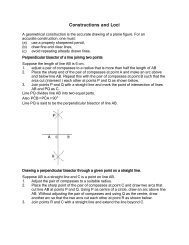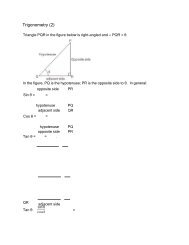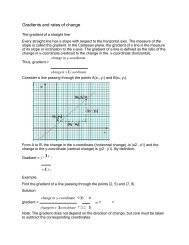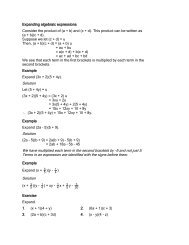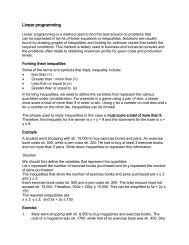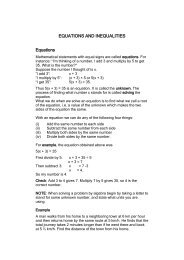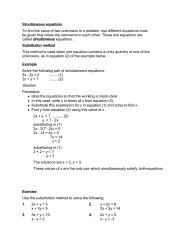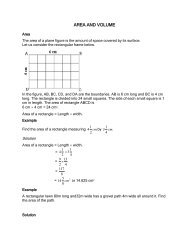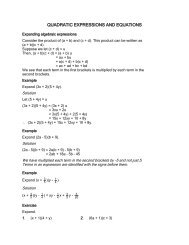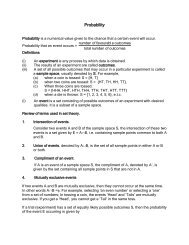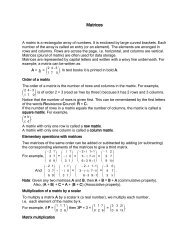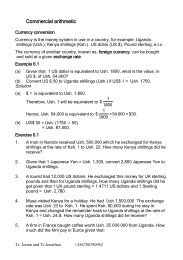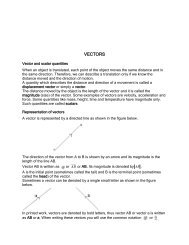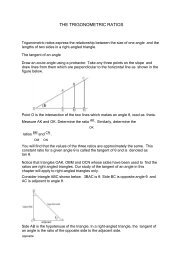J20
You also want an ePaper? Increase the reach of your titles
YUMPU automatically turns print PDFs into web optimized ePapers that Google loves.
(i) Find the coordinates of A 4, B 4 and C 4.<br />
(ii) Describe transformation S fully.<br />
13. Triangle ABC has its vertices at A(6, 0), B(9, 2) and C(6, 2).<br />
(a) Determine the coordinates of the vertices of its image, A1B1C1, after a<br />
transformation P, where P represents a reflection in the line<br />
y = 3.<br />
(b) If Q represents an anticlockwise quarter-turn about the point (2, 3),<br />
determine the coordinates of the vertices of triangle A2B2C2, the image of<br />
triangle A1B1C1 under transformation Q.<br />
14. The vertices of ∆PQR are P(1, 1), Q(2, 2) and R(0, 3).<br />
(a) Draw and label ∆PQR.<br />
(b) The vertices of ∆P1Q1R1 are found at P1(-2, 2), Q1(-3, 3) and<br />
R1(-4, 1). Draw and label ∆P1Q1R1.<br />
(c) Describe fully the single transformation that maps ∆PQR onto ∆P1Q1R1.<br />
(d) Triangle PQR can also be mapped onto ∆P1Q1R1 by an anticlockwise rotation<br />
of 90 0 about the origin, followed by a translation. Write down the column<br />
vector which represents this translation.<br />
15. (a) Draw the axes so that both x and y can take values from -2 to +8.<br />
(b) Draw triangle ABC at A(2, 1), B(7, 1), C(2, 4).<br />
(c) Find the image of ABC under the transformation represented by the matrix<br />
1<br />
1<br />
and plot the image on the graph.<br />
1<br />
1 <br />
(d) The transformation is a rotation followed by an enlargement. Calculate the<br />
angle of the rotation and the scale factor of the enlargement.<br />
16. (a) On graph paper, draw the triangle T whose vertices are (2, 2), (6, 2) and (6,<br />
4).<br />
(b) Draw the image U of T under the transformation whose matrix is<br />
0<br />
1 <br />
.<br />
1<br />
0<br />
(c) Draw the image V of T under the transformation whose matrix is<br />
1<br />
0 <br />
.<br />
0<br />
1<br />
(e) Describe the single transformation which would map U onto V.<br />
17. (a) Find the images of the points (1, 0), (2, 1), (3, -1), (-2, 3) under the<br />
1<br />
3 <br />
transformation with matrix .<br />
2<br />
6<br />
(b) Show that the images lie on a straight line, and find its equation.<br />
2<br />
3<br />
18. The transformation with matrix maps every point in the plane onto a line.<br />
6<br />
9<br />
Find the equation of the line.



